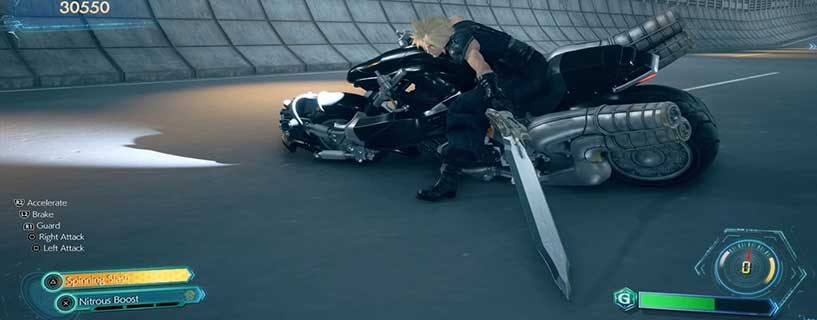Final Fantasy, a storied franchise known for its deep narratives and expansive worlds, also boasts a rich variety of minigames that offer players delightful diversions from the main storyline. These minigames range from strategic card games like Triple Triad in Final Fantasy VIII to the intense Blitzball tournaments in Final Fantasy X. Each minigame is carefully crafted to fit the unique setting of its world, often reflecting the culture and technology of the surrounding environment. These activities not only provide a fun break from the game’s more serious elements but also offer valuable rewards and insights into the game’s lore. Engaging in these minigames can lead to rare items, additional backstory, and sometimes even influence the main storyline, enriching the overall gameplay experience and increasing replay value.
I’ve played them all, I have my favorites of course, some of them might surprise you, but I’ll try to give you an objective list of the TOP10 best Minigames in the Final Fantasy universe.
#10 Fishing – FF15
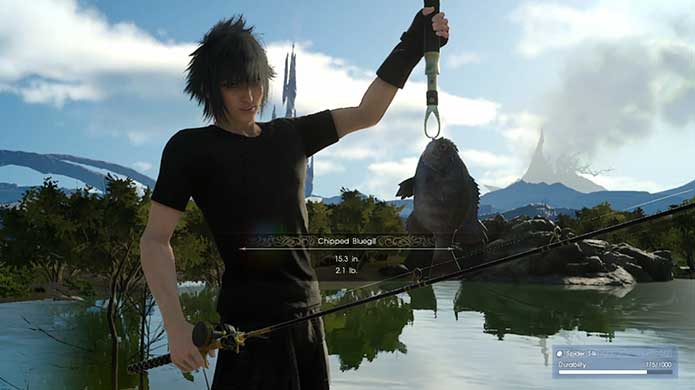 Fishing in “Final Fantasy XV” stands out as not just a pastime but a well-integrated component of the game’s world and narrative. Players take on the role of Prince Noctis, whose hobby is fishing, making it a unique and personal part of the gameplay experience. The fishing mechanic is detailed and immersive, providing a realistic experience that requires players to consider the type of rod, reel, line, and lure they use, each affecting their success in catching various fish.
Fishing in “Final Fantasy XV” stands out as not just a pastime but a well-integrated component of the game’s world and narrative. Players take on the role of Prince Noctis, whose hobby is fishing, making it a unique and personal part of the gameplay experience. The fishing mechanic is detailed and immersive, providing a realistic experience that requires players to consider the type of rod, reel, line, and lure they use, each affecting their success in catching various fish.
The fishing spots scattered throughout the game’s vast and picturesque world also contribute to the overall exploration and enjoyment. These locations often feature beautifully rendered vistas, from tranquil lakes to rushing rivers, which showcase the game’s impressive graphics and attention to environmental detail. Each fishing spot contains different species, adding a collectible aspect to the activity and encouraging players to explore more of the game world.
Why the Fishing Game in Final Fantasy XV Was Good
- Depth and Realism: The fishing in “Final Fantasy XV” is remarkably detailed. Players must consider multiple factors like fishing gear, including rods, reels, lines, and lures, each with unique stats and suitable for different kinds of fish. This level of detail adds a layer of strategy and realism to the experience.
- Variety of Fish and Locations: The game features a wide variety of fish species, each with unique behaviors and preferences for certain types of bait and weather conditions. This variety, combined with numerous scenic fishing spots across the game’s map, encourages exploration and keeps the activity fresh and engaging.
- Integration into Game’s Economy and Quests: Fishing isn’t just for leisure; it’s integrated into the game’s economy and quest systems. Fish can be used as ingredients for cooking meals, which provide stat boosts, making fishing beneficial for overall gameplay progression. Additionally, there are fishing-related quests that add to the narrative and character development, particularly fleshing out Noctis’s personal interests and skills.
- Rewarding Skill Development: The fishing mechanics are designed to reward player skill and patience. As players get better at reading the fish’s movements and mastering the reel-in technique, they can catch rarer and bigger fish, which is satisfying and rewarding.
One Improvement for the Fishing Game in Final Fantasy XV
While the fishing mechanics were well-received, one area for improvement could be the interaction and dynamic events during fishing. The fishing experience, despite its depth, can sometimes feel isolated and static, especially after extended gameplay sessions. Introducing more dynamic interactions or random events while fishing could enhance the immersion. For example, occasional competitions with other characters, unexpected weather changes affecting fish behavior, or special legendary fish that require unique strategies to catch could have added an exciting layer of unpredictability and challenge to the fishing experience. These elements could make each fishing outing feel more unique and engaging, further deepening the player’s immersion in the world of “Final Fantasy XV.”
#9 Blackjack – FF9
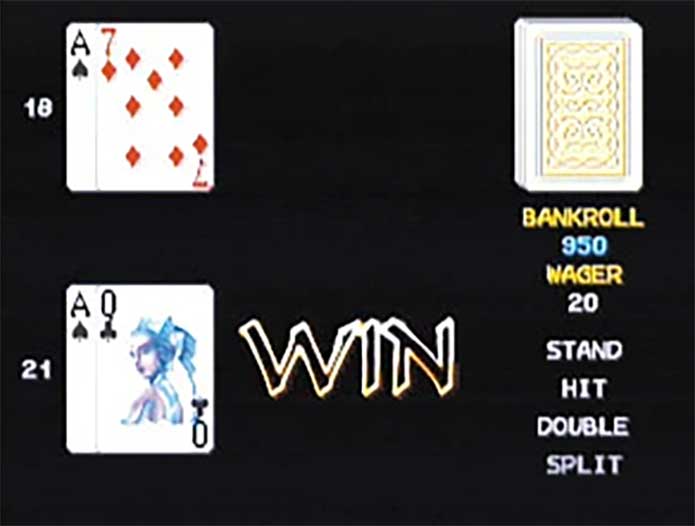 In Final Fantasy IX, the Blackjack mini-game serves as a hidden, entertaining Easter egg that players can unlock and enjoy. This inclusion is a delightful nod to classic card games and offers a brief diversion from the main storyline, adding an extra layer of fun to an already rich gaming experience.
In Final Fantasy IX, the Blackjack mini-game serves as a hidden, entertaining Easter egg that players can unlock and enjoy. This inclusion is a delightful nod to classic card games and offers a brief diversion from the main storyline, adding an extra layer of fun to an already rich gaming experience.
How to Access the Blackjack Game
Unlocking the Blackjack game in Final Fantasy IX is relatively simple but requires the player to complete the main game first. Once the end credits have finished rolling, players can enter a specific code during the “The End” screen. The code varies depending on the gaming console:
- For PlayStation: R2, L1, R2, R2, Up, X, Right, Circle, Down, Triangle, L2, R1, R2, L1, Square, Square
- For PC: (using default keyboard settings) F, Switch, F, F, Up, Confirm, Right, Cancel, Down, Menu, PgUp, PgDn, F, Switch, Assist, Assist
Entering this code correctly triggers the Blackjack game, allowing players to play a few hands of this classic card game against an AI dealer.
Gameplay Mechanics
The Blackjack game in Final Fantasy IX adheres to the basic rules of traditional Blackjack. The goal is to have your hand total as close to 21 as possible without exceeding it (“busting”), and ideally higher than the dealer’s hand. The player is dealt two cards and can choose to “Hit” (take another card) or “Stand” (keep their current hand). There are no betting mechanics or monetary stakes involved; it’s purely for fun and bragging rights. However, if you’d rather play real Blackjack, then you should instead seek a trustworthy website such as Casino online NZ. Do keep in mind this is real money though, so please take all necessary precautions when playing. Only play amounts of money you can afford to lose.
Significance and Appeal
The inclusion of Blackjack in “Final Fantasy IX” is a testament to the game’s depth and the developers’ dedication to creating a memorable, engaging experience. Mini-games like this not only provide a break from the main narrative but also enrich the game’s world, offering players reasons to explore every nook and cranny of the content.
While the Blackjack game is quite basic and not as integrated into the storyline or character development as other mini-games in the “Final Fantasy” series, it remains a beloved feature for many. It serves as a hidden treat for players who stick with the game through to the end credits, rewarding their dedication with a bit of light-hearted fun.
Overall, the Blackjack mini-game in “Final Fantasy IX” is a small but charming addition that enhances the overall enjoyment of the game, reflecting the whimsical and detailed world that Square Enix is known for crafting in its “Final Fantasy” series.
#8 3D Brawler – FF7 Rebirth
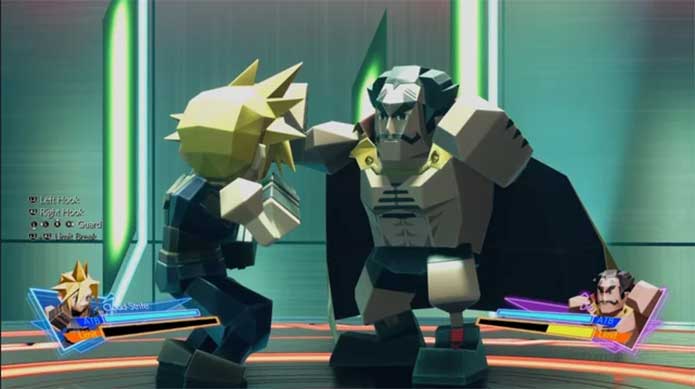
Final Fantasy VII Rebirth breathes new life into the infamous Gold Saucer minigame from the original game, transforming it into an engaging and fully-realizable feature. The revamped 3D Brawler invites you into a Punch Out-style fighting game where success hinges on your ability to read and react to your opponent’s combat style—dodging their attacks and delivering strategic counterstrikes to prevail.
In contrast to the original minigame, which relied heavily on luck and featured an unbeatable, invisible final opponent, the updated 3D Brawler offers a more substantive and fair gameplay experience. Players now have a genuine chance to defeat every adversary they encounter. At its core, it’s a dynamic, bite-sized fighting game that delivers plenty of fun, though the intricate controls and the challenge of deciphering opponent’s moves can sometimes add a layer of difficulty. Nonetheless, this minigame stands as a fitting homage to classic Final Fantasy VII, redeeming one of its most notorious challenges.
However, the final opponent (Sephiroth, of course) of this minigame is considered to be one of the hardest challenges in FF7 Rebirth, and has many players banging their heads against it. I personally really joyed this revamped version overall, but I do agree that the Sephiroth bout should be tuned down, because I don’t like having to pause the game every time a punch is coming my way (a known trick to beat this minigame) to be able to win. We don’t all have superhuman reflexes… so definitely NOT for everyone!
#7 Run Wild – FF7 Rebirth
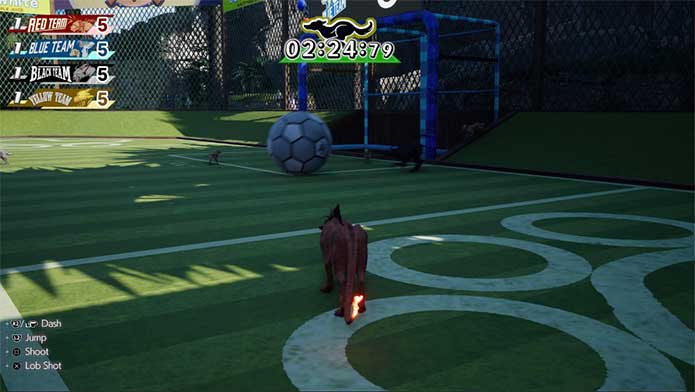
This minigame stars Red XIII and offers an exhilarating twist on traditional soccer, taking place in the vibrant Costa Del Sol. Run Wild features two dynamic game modes: one where four teams compete to dominate the field, and another that challenges Red XIII to navigate balls into goals while skillfully dodging obstacles. The gameplay in Run Wild is thrilling, providing players with the delightful opportunity to unleash Red XIII’s unique abilities in a fun, action-packed setting. The minigame’s design masterfully combines excitement and challenge, ensuring each round feels fresh and engaging.
I had a blast with this minigame and my only gripe is that it was over too soon. I wish there were more challenges and more rewards to unlock with Run Wild, because it’s a ton of fun to play!
#6 Chocobo Racing – FF14
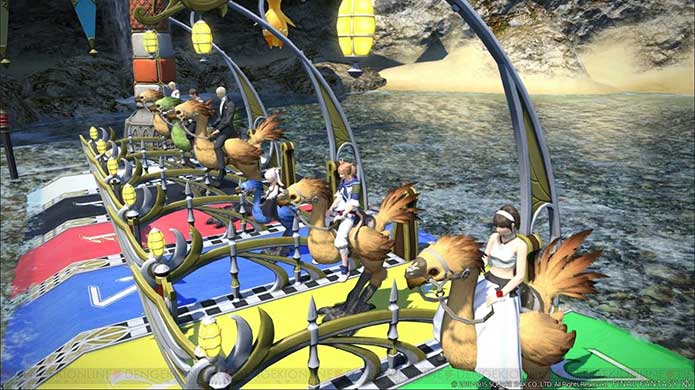 Chocobo Racing in Final Fantasy XIV offers a unique and engaging addition to the game’s wide array of activities. As part of the Gold Saucer entertainment complex—a virtual amusement park loaded with mini-games—Chocobo Racing allows players to experience the thrill of racing their chocobos against others in a competitive setting.
Chocobo Racing in Final Fantasy XIV offers a unique and engaging addition to the game’s wide array of activities. As part of the Gold Saucer entertainment complex—a virtual amusement park loaded with mini-games—Chocobo Racing allows players to experience the thrill of racing their chocobos against others in a competitive setting.
How It Works
Chocobo Racing in Final Fantasy XIV is inspired by classic racing games but integrates unique mechanics that tie into the broader MMORPG environment. Players first need to acquire a racing chocobo, which can be done through the Chocobo Square within the Gold Saucer. Each chocobo has its own set of attributes: Speed, Stamina, Endurance, and Cunning, which can be improved through training and breeding.
Racing Mechanics
Races take place on various tracks, each with its own challenges and environmental effects. During a race, players must manage their chocobo’s stamina, deciding when to sprint and when to conserve energy. Additionally, there are ability panels scattered on the tracks, granting temporary boosts or hindrances—similar to power-ups in traditional racing games.
Strategic use of these abilities, along with careful stamina management, is key to outpacing competitors. Players also face random weather conditions and track hazards that add to the complexity and strategy of each race.
Breeding and Training
One of the most engaging aspects of Chocobo Racing is breeding. Players can retire their seasoned racers to breed new chocobos, passing on traits and potentially unlocking even more potent abilities. This generational progression adds a layer of depth to the game, as players strive to cultivate the best attributes for competitive racing.
Community and Rewards
Participating in Chocobo Racing not only fuels competitive spirit but also offers significant rewards. Players earn Manderville Gold Saucer Points (MGP), which can be used to purchase a variety of items within the Gold Saucer, including exclusive mounts, outfits, and other cosmetics. The community aspect is vibrant, with players often sharing strategies, celebrating victories, and even hosting unofficial tournaments.
Conclusion
Chocobo Racing in Final Fantasy XIV is a beloved feature that enriches the game’s world. It provides an entertaining diversion from the usual quests and combat, encouraging players to engage in a different kind of challenge. With its strategic depth, community involvement, and rewarding progression, Chocobo Racing remains a favorite pastime for many adventurers in Eorzea.
#5 Fort Condor – FF7 Rebirth
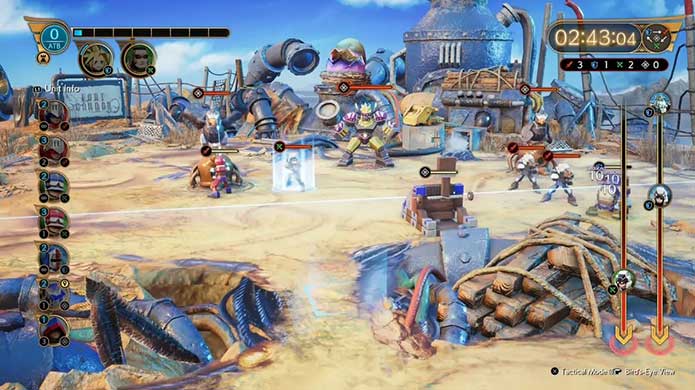
In Final Fantasy VII Rebirth, the Fort Condor minigame has been reimagined and reintroduced, enhancing an already beloved aspect of the original Final Fantasy VII. This strategic mini-game, set within the storyline’s pivotal resistance efforts at Fort Condor, blends tactics and real-time decisions, offering players an engaging and immersive experience.
Overview of Fort Condor Minigame
The Fort Condor minigame is essentially a tactical battle simulation where players must defend the fort against invading Shinra forces. The game operates on a tower defense-like system where players strategically place units on a map to stop the enemy’s advance toward the top of the fort. Each unit type—ranging from close-range fighters like Attackers to long-range units like Shooters and support units like Healers—has its own strengths, costs, and strategic uses.
Gameplay Mechanics
In Final Fantasy VII Rebirth, the Fort Condor minigame has been updated to feature more dynamic and visually engaging battles. Players manage their resources (referred to as “gil” in-game) to deploy various unit types on the field. As time progresses, players earn more gil, allowing them to place additional or more powerful units.
The strategic depth of the game is considerable. Players must choose the right mix of units to counter the types of enemies Shinra deploys, and they must react in real time to shifts in the battlefield. Additionally, special abilities and power-ups can turn the tide of battle, adding another layer of strategy.
Integration into the Main Game
Fort Condor’s inclusion in Final Fantasy VII Rebirth is not just a side activity; it ties into the main narrative, reflecting the ongoing conflict between the eco-terrorist group Avalanche and the Shinra Electric Power Company. Success in these mini-games can influence the resources and support Avalanche gains, adding a meaningful layer to the game’s story and player involvement.
Community and Multiplayer Aspects
While primarily a single-player experience, the Fort Condor minigame fosters a sense of community as players share strategies, battle stories, and compete for high scores in what can be described as informal competitive play. This adds a communal dimension to the game, enhancing player engagement and enjoyment.
Conclusion
The Fort Condor minigame in Final Fantasy VII Rebirth stands out as a thoughtfully crafted and exciting part of the game. It not only offers a break from the main combat and exploration elements but also deepens the player’s involvement in the world and story of Final Fantasy VII. By combining strategic planning with real-time tactical execution, it provides a challenging and rewarding experience that complements the main narrative beautifully.
I really enjoyed the previous iteration from FF7 Intermission DLC, but the Rebirth version is even more polished, and having Cloud, Tifa and Barret’s in chibby polygonal models to play with is just icing on the cake.
#4 Chocobo Hot and Cold – FF9
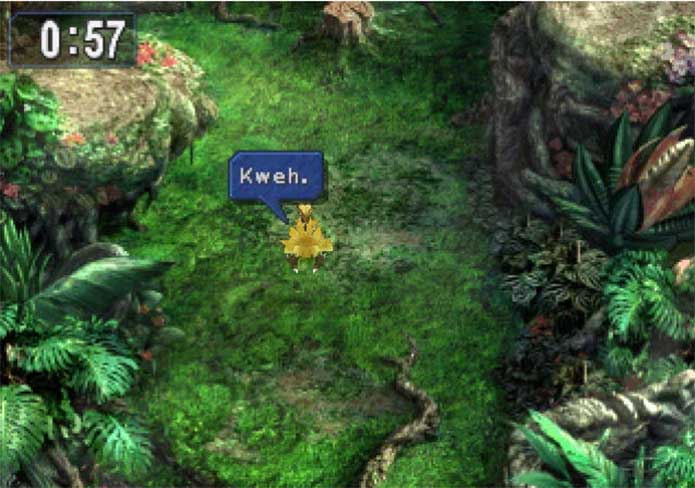
Chocobo Hot and Cold is a beloved and engaging mini-game found in Final Fantasy IX. Played using Choco, the game’s main chocobo character, this mini-game mixes exploration with treasure hunting in a fun and unique way that adds significant depth and playability to the overall game experience.
How It Works
The mini-game is accessible once players acquire Choco in the Chocobo’s Forest, and later in other locations like Chocobo’s Lagoon and Chocobo’s Air Garden. The objective is straightforward: dig in various parts of the game map to uncover hidden items and treasures within a set time limit. As Choco pecks at the ground, the game provides “hot” and “cold” signals indicating the proximity to the treasure. A “hotter” signal means you are closer to a treasure, while a “colder” one means you are further away.
Gameplay Elements
Chocobo Hot and Cold is notably exciting due to its random nature and the rewards it offers. Players must listen for audio cues and watch for visual feedback from Choco to determine if they’re getting closer to an item. The mini-game requires quick reactions and a bit of strategy as players decide where to dig next based on the clues given.
Each successful find yields points that can be used to purchase items at the Chocobo’s Forest shop. More importantly, players can discover special items like Chocographs, which are treasure maps that lead to hidden caches across the world map containing rare items, equipment, and even more points.
Upgrading Choco
As players progress in Chocobo Hot and Cold, they can find items that allow Choco to upgrade and access new areas within the game environments. These upgrades include the ability to cross rivers, climb mountains, or even fly, gradually opening up new areas for treasure hunting. Each new ability not only enhances the mini-game but also affects the main game by allowing access to previously unreachable areas.
Why It’s Loved
Chocobo Hot and Cold is widely appreciated for several reasons:
- Rewarding Exploration: The mini-game rewards exploration and patience with substantial in-game benefits, including powerful equipment and items that can significantly aid in the main game.
- Engaging Progression: The ability to upgrade Choco and unlock new areas keeps the mini-game fresh and engaging long into the main storyline.
- Fun Factor: The simple yet addictive nature of the treasure hunt, combined with the excitement of uncovering rare items, offers a fun diversion from the main narrative.
Overall, Chocobo Hot and Cold in Final Fantasy IX is a fantastic example of how a mini-game can complement the main game, enhancing the overall experience and providing players with hours of additional enjoyment. Its clever integration of exploration, strategy, and rewards creates a memorable and enriching aspect of the game that players often return to long after completing the main storyline.
#3 Blitzball – FF10
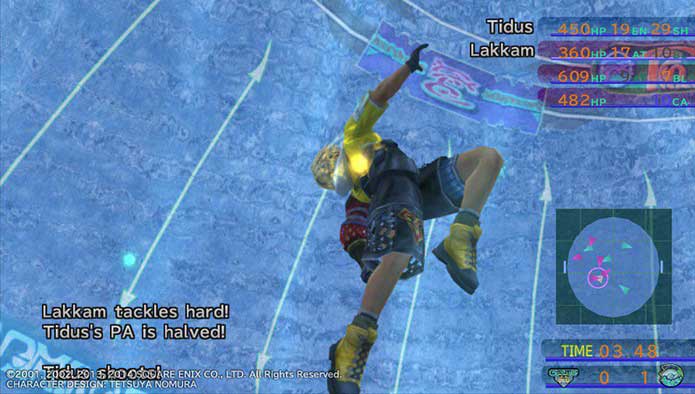 A personal favorite of mine. I think I spent more time playing Blitzball and perfecting my team than playing the actual FFX game, which was one of the best Final Fantasy games though! So that’s saying a lot.
A personal favorite of mine. I think I spent more time playing Blitzball and perfecting my team than playing the actual FFX game, which was one of the best Final Fantasy games though! So that’s saying a lot.
Blitzball is a highly popular mini-game in Final Fantasy X that combines elements of underwater soccer and rugby into a competitive and strategic sports game. Set in the fictional world of Spira, Blitzball is not just a pastime but an integral part of the game’s cultural backdrop, reflecting the community spirit and resilience of its people.
Overview and Setting
Blitzball is played in a massive, spherical water arena called the Blitzball Stadium, located in the city of Luca. Players control a team of six players—five field players and one goalkeeper—as they navigate a fully submerged sphere. The objective is to score goals by throwing a ball into the opponent’s goal, all while swimming and managing their team’s movements under water.
Gameplay Mechanics
The game is both strategic and action-packed. Players manage their team in a turn-based system when in possession of the ball, choosing actions like passing, shooting, or using special techniques. When defending, the game shifts to a more real-time interaction where positioning and player stats (such as Endurance, Pass, Shoot, and Attack) play critical roles in intercepting the ball or blocking shots.
Each player can learn and develop new skills, adding a layer of depth to team management. Teams can be customized, and players recruited from various NPCs encountered throughout Spira, each bringing unique abilities and stats to the team.
Cultural Significance in Spira
In the world of Final Fantasy X, Blitzball represents more than just a sport. It’s a unifying event that brings together people from different races and regions, providing common ground and entertainment amid the ongoing threats of the monstrous Sin. The protagonist, Tidus, is a professional Blitzball player from Zanarkand, and his skills and background play a significant role in the unfolding narrative.
Impact on Players
Blitzball was widely acclaimed for its depth and replayability. It allows players to engage in a robust and strategic sports management experience within an RPG, which was quite novel at the time of its release. The ability to scout and recruit new team members from across the game world adds a layer of personal investment in the mini-game, encouraging players to improve their team continually.
However, Blitzball also received mixed reactions due to its complexity and the stark contrast it presents to the main RPG gameplay of Final Fantasy X. For some, it is a welcome diversion—a game within a game that offers hours of additional content. For others, its initial learning curve and the necessity of playing it to progress certain character subplots can be somewhat daunting.
Overall, Blitzball is one of the most memorable and innovative mini-games in the Final Fantasy series, offering a unique blend of sports simulation and RPG elements that has captivated players for decades. Its integration into the game’s world, coupled with its strategic gameplay, has made it a beloved and enduring feature of Final Fantasy X.
#2 Triple Triad – FF8
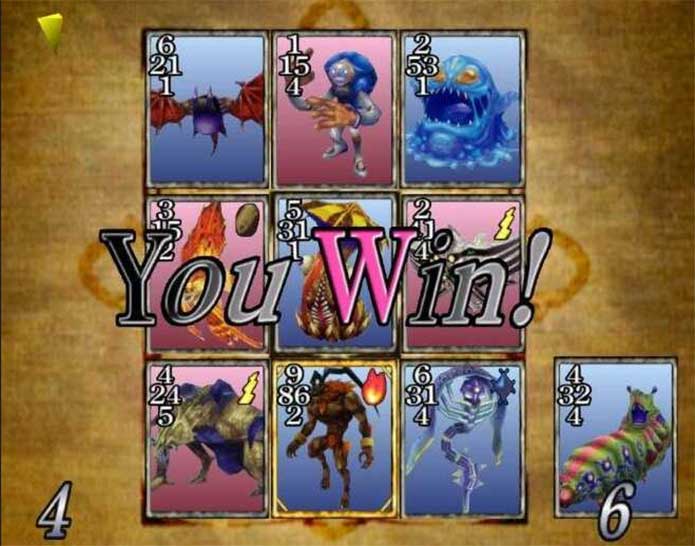
Triple Triad, introduced in Final Fantasy VIII, is widely celebrated as one of the best, if not the best, mini-games in the entire Final Fantasy series. This card game combines simplicity and depth, offering a compelling diversion that many players found just as engaging as the main storyline.
Overview of Triple Triad
Triple Triad is a card game played on a 3×3 grid where players place cards alternatively with the aim of capturing their opponent’s cards. Each card features four numbers (one on each side of the card), which represent its strength. The basic rule is simple: when a card is placed adjacent to an opponent’s card, their respective sides are compared, and if the placed card has a higher number, it captures the opponent’s card, turning it into the player’s color.
Gameplay and Strategy
The game starts with a simple set of rules, but as players progress through different regions in the game, local rules add layers of complexity and strategy. These rules can include elemental alignments, where cards gain or lose strength based on their elemental attributes and the grid’s elemental properties, or the ‘Same’ rule, where a card can flip multiple opponent cards if it matches the numbers on two or more adjacent cards.
Players can win new cards from NPCs or through a series of in-game tournaments, which encourages exploring and interacting with the game world more extensively. Cards can also be converted into rare items through Final Fantasy VIII‘s unique ability system, linking the mini-game back to the main RPG gameplay.
Cultural Impact and Legacy
Triple Triad was so popular that it not only influenced the design of future mini-games within the Final Fantasy series but also saw its revival in Final Fantasy XIV, where it remains a favorite activity among players. Its impact extends beyond the game itself, inspiring standalone mobile and browser games and a dedicated player community around the world.
Reasons for High Regard
- Integration and Reward: Triple Triad is seamlessly integrated into the world of Final Fantasy VIII, affecting the core gameplay by allowing players to convert cards into useful items that aid in battles. This integration adds a layer of strategic depth to the overall gameplay experience.
- Accessibility and Depth: The game’s rules are easy to learn but hard to master, offering an accessible entry point for all players and a deep, strategic challenge for those who seek to master all its nuances.
- Replayability: With the vast array of cards to collect and the ever-changing rules from region to region, Triple Triad offers immense replayability. Players can spend countless hours challenging different characters and refining their strategies.
- Community Engagement: Triple Triad fosters a sense of community both within and outside of the game. Players discuss strategies, trade cards, and compete in tournaments, creating a lively subculture within the Final Fantasy fandom.
These elements combine to make Triple Triad exceptionally memorable and enjoyable, securing its place at the pinnacle of video game mini-games and contributing significantly to the enduring success and legacy of Final Fantasy VIII.
#1 Queen’s Blood – FF7 Rebirth
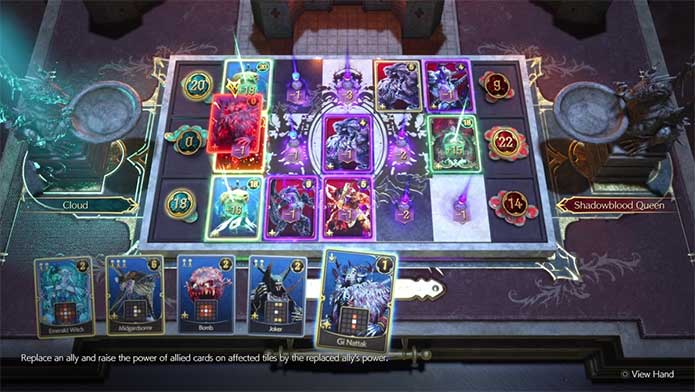
The first mini-game you’ll encounter in Final Fantasy VII Rebirth is arguably the finest of its kind across the series. “Queen’s Blood” stands out not only as the most accessible card game in the Final Fantasy universe but also as the most rewarding to master. Its approachability surpasses that of Final Fantasy VIII‘s Triple Triad and Final Fantasy IX‘s Tetra Master, making it a standout feature in the game.
As players guide Cloud through various regions, battling other Queen’s Blood enthusiasts, they will watch him climb the ranks to become a top-tier card player. Some of these matches carry intense stakes, reminiscent of the high-drama duels in Yu-Gi-Oh, with a deep respect for the art of card battling that adds a thrilling edge to each encounter.
Enhancing the allure of Queen’s Blood is its lively jazz-inspired soundtrack, which perfectly complements the vibrant and energetic gameplay. This dynamic audio backdrop ensures that every match is infused with excitement, keeping players engaged and eager for more.
In Final Fantasy VII Rebirth, characters throughout the towns are always ready for a match, and many boast impressively strong decks that present a real challenge. Unlike other card games from previous Final Fantasy titles, which I found lacked lasting appeal, Queen’s Blood captures the essence of what makes trading card games so captivating: the joy of play and the community that grows around it, dedicating themselves to elevating the game to something extraordinary. This focus on community and shared enthusiasm makes Queen’s Blood not only engaging but also endearing as a pivotal part of the game’s world.
Why Queen’s Blood Could Be Considered Better Than Triple Triad
- Deeper Narrative Integration: While Triple Triad is excellently integrated into Final Fantasy VIII‘s world, “Queen’s Blood” could potentially weave itself even more deeply into the main storyline of Final Fantasy VII Rebirth. Imagine a game that not only offers fun and strategic gameplay but also unfolds more of the game’s backstory and character motivations as you progress through different levels or challenges.
- More Complex Strategic Elements: Triple Triad’s strategic depth is undeniable, but “Queen’s Blood” could introduce even more layers of strategy. This could include real-time decision-making influences from the main game, where the outcome of certain battles or story decisions impacts your available cards or strategies in the minigame. Additionally, environmental and situational factors could play into how the game is played, mirroring the constantly changing dynamics of Final Fantasy VII Rebirth‘s main gameplay.
- Enhanced Player Interaction: Triple Triad is primarily a single-player experience against NPCs with the exception of its online iteration in Final Fantasy XIV. “Queen’s Blood” could expand on this by incorporating a more robust multiplayer feature, allowing players to challenge each other directly in a competitive arena that also encourages cooperative play and team strategies.
- Greater Rewards and Incentives: Triple Triad allows players to convert cards into items, but “Queen’s Blood” could take this further by offering rewards that have significant impacts on gameplay, such as exclusive gear, abilities, or even unique story content. This would give players more incentive to dive into the minigame, knowing that their efforts could yield substantial benefits for their adventure in Final Fantasy VII Rebirth.
- Visual and Audio Presentation: With the advancements in gaming technology and design, “Queen’s Blood” could feature stunning visual effects, animations, and immersive sound designs that enhance the gaming experience beyond the relatively static appearance of Triple Triad.

